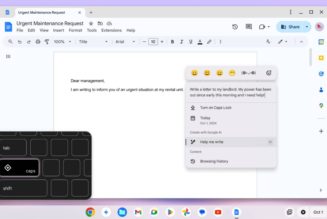A possibly fake request for a gay wedding website has made the Supreme Court’s coming online speech showdown even weirder.
Share this story

The Supreme Court has ruled that a graphic designer can’t be required to make a website celebrating the wedding of a (possibly hypothetical) gay couple, saying it would violate First Amendment protections against compelled speech. It’s a decision that isn’t necessarily surprising for the current court but one that could intersect strangely with the coming fight over online moderation.
Justice Neil Gorsuch delivered the majority opinion in 303 Creative v. Elenis, and it was supported in a 6 to 3 vote, with the court’s liberal minority dissenting. Gorsuch determined that Colorado graphic and web designer Lorie Smith could legally refuse service to a same-sex couple looking to commission a wedding website, something that Smith found morally objectionable. Because her web design communicated “pure speech” that included Smith’s own words and images, Gorsuch determined that saying otherwise “would allow the government to force all manner of artists, speechwriters, and others whose services involve speech to speak what they do not believe on pain of penalty.” For instance, “the government could force a male website designer married to another man to design websites for an organization that advocates against same-sex marriage.”
It’s not clear whether any specific couple will have to rework their wedding plans after this. As The New Republic reported yesterday, Smith filed suit after getting a request for services from a couple named “Stewart” and “Mike,” but the Stewart in question says he’s already married to a woman and never actually made the request. The incident was seemingly crafted to let the conservative-heavy Supreme Court carve out protections for belief-based discrimination along the lines of the Masterpiece Cakeshop case.
And the dissenting opinion, delivered by Justice Sonia Sotomayor, calls the idea that the case is about speech “profoundly wrong” and reactionary. “The law in question targets conduct, not speech, for regulation, and the act of discrimination has never constituted protected expression under the First Amendment,” Sotomayor writes. “Our Constitution contains no right to refuse service to a disfavored group.”
In any case, though, the court’s official position is this:
The First Amendment prohibits Colorado from forcing a website designer to create expressive designs speaking messages with which the designer disagrees.
That sets up an interesting future conflict because conservative lawmakers in multiple states are currently attempting to ban large swathes of social media content moderation — something that very literally involves making a website designer create designs speaking messages they disagree with. Earlier this year, the Supreme Court asked the Biden administration for input on two cases involving moderation bans in Texas and Florida, both of which will likely be argued largely on compelled-speech grounds. Texas and Florida argue that their bans prevent discrimination against conservative users, while opponents say they would require sites to host material they find morally repugnant, including neo-Nazi propaganda or anti-vaccine disinformation.
Does this signal that the same justices will be sympathetic to social network operators who disagree with hate speech or misinformation and don’t want to host it? We’re living under the law of the YOLO Court, so I have no idea. There’s a huge range of reasonable and less-than-reasonable distinctions you could draw between an individual website designer (who hadn’t even designed any wedding sites when the suit was filed) and some of the largest communications platforms on the planet. But the Supreme Court made a remarkably sensible decision to leave Section 230 alone in Google v. Gonzalez and its companion case Twitter v. Taamneh, following arguments that focused on how doing otherwise could pragmatically upend the internet. Either way, the court will probably find its words repeated back to it soon.









